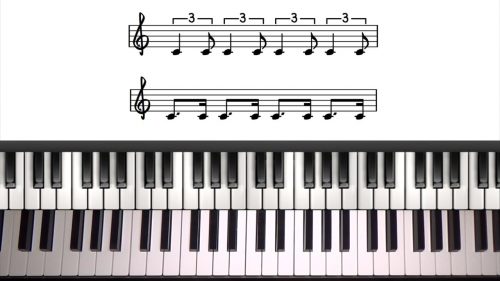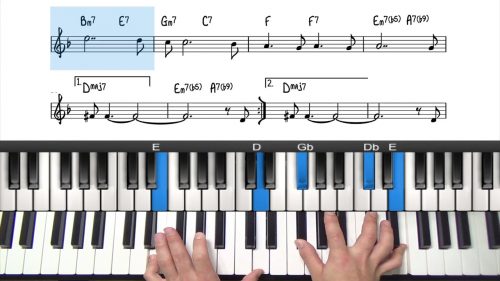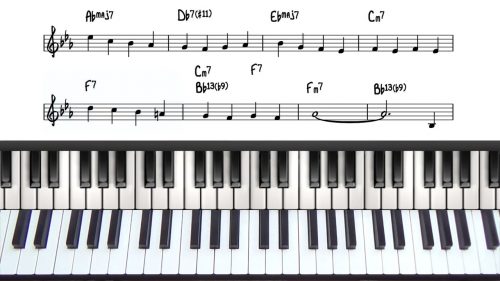There Will Never Be Another You Transcription
In this lesson we will explore how you can develop your ability to add fills and other melodic decoration to the tunes you are playing.
We’re going to use the tune "There Will Never Be Another You" to demonstrate this. This is a great tune to practice fills because there is a lot of space in the melody.
In this lesson we will explore the following topics:
- swing feel
- approach patterns and enclosures
- chord tone soloing and resolving into chord tones
- incorporating turns into lines
- using chromaticism
- super imposing the blues scale over chord sequence
Lesson Downloads
-
Arturo Sandoval Transcription File Type: pdf
Practice Tips
-
From listening to your records, make note of anything you like, in mm:ss format, and then attempt to transcribe it in your practice time.
-
Start off transcribing single note melody lines.
-
For more information on the Transcription Exercises, and how they can benefit your playing.... head over to the transcription thread in the community/forum area of the website.
-
Transcription is hands down the most time effective way to improve at jazz. It’s very difficult to begin with (hence the forum thread) but it gets easier and easier until it becomes second nature to hear a line and find the notes almost instantly.
- Transcription is the key to learning improvisation.






Thanks again Hayden for a brilliant tutorial on transcription and improvisation . You mentioned the major 7th and a flatted 7th which is just a fragment and total makeup of the dominant bebop scale that is used a great deal in the jazz bebop language and I totally agree via transcription is the arsenal for learning the jazz language. Thank you so very much for such excellent tutorials that are worth all it’s gold and highly high priced in a jazz music conservatory or college. I love you for this and your time and efforts for sharing this with us.
My pleasure George, thanks for the interesting and insightful comment – re. the dominant bebop scale.
I’d recommend ‘testing the water’ with the minor 7th/major 7th every time you are playing over a minor chord, not that you would want to use it every time, but practicing like this will help you visualise those two tones. As you say it’s one of the hallmarks of the bebop sound… incredibly useful and it will makes your solos sound like real jazz.
Yes I also completely agree that “transcription is the key to learning the jazz language” … you have to spend the time to listen to this music, really listen to it. And that’s what transcription is… you have to listen over and over and over again to figure out the notes and in the process the rhythm and articulation is ingrained in you.
It has done wonders for my own playing, and I want to share this with all of my students. I don’t want to force my own style of jazz on my students, I’m trying to teach you how to learn, if that makes sense.
Instead of just watching and copying my hands move, I want to empower all of my students to search for the sound they want, and then share their findings with the community.
The sooner the student understands the importance of transcription, the better. I wish I had figured this out sooner!
I appreciate the feedback George… and it makes me very happy to hear your comments. If I can help you with anything just fire over an email.
Cheers, Hayden